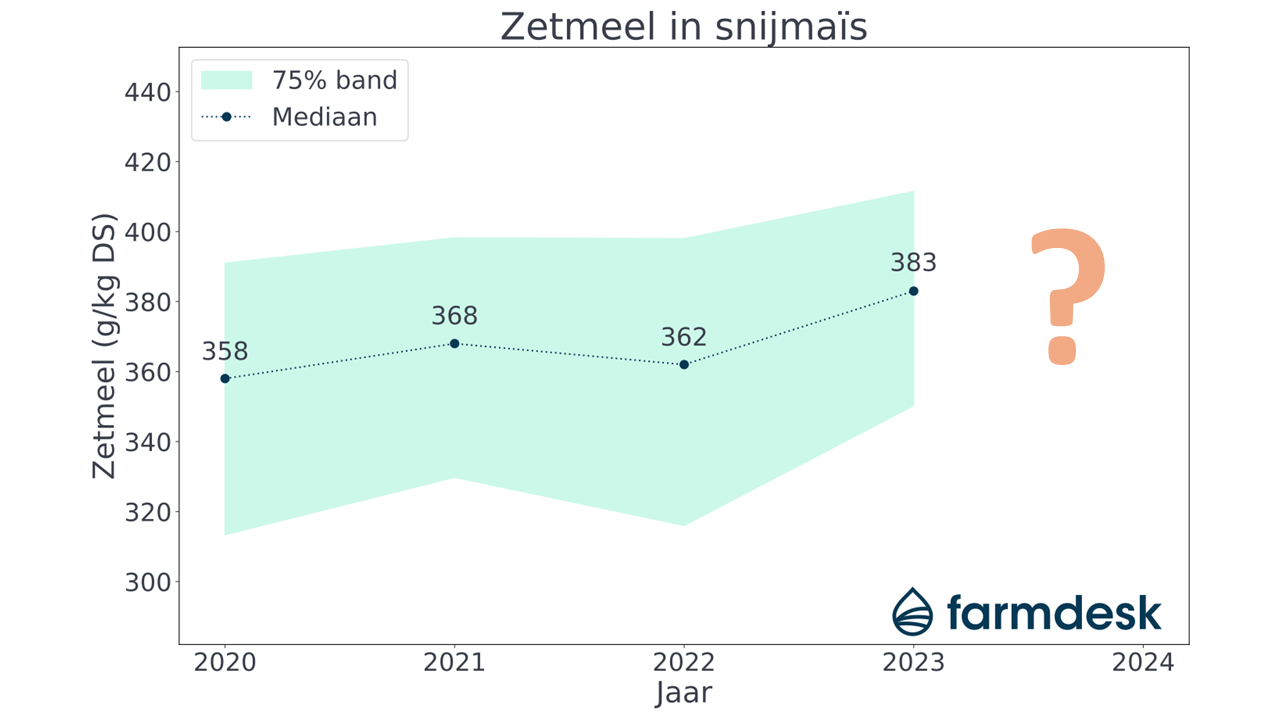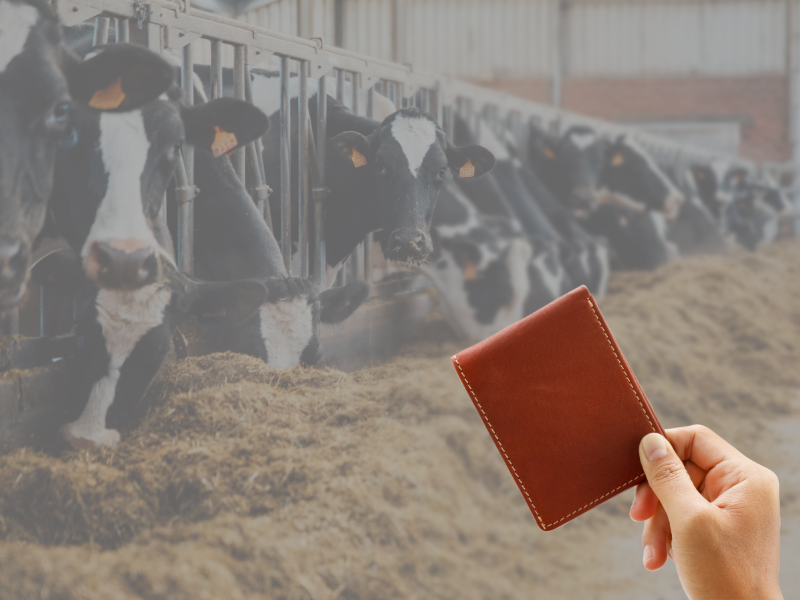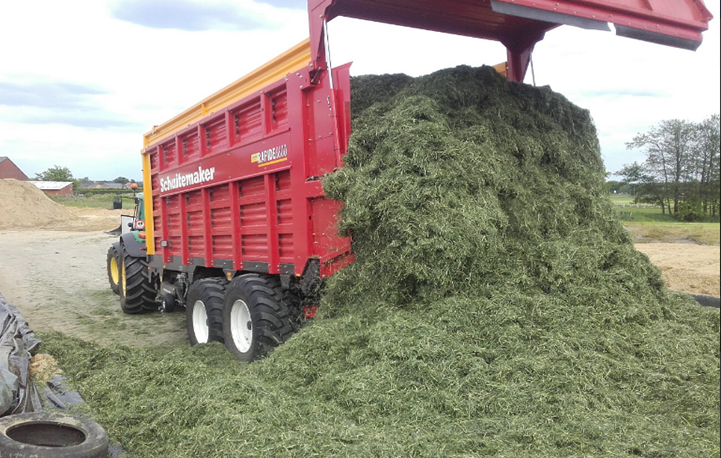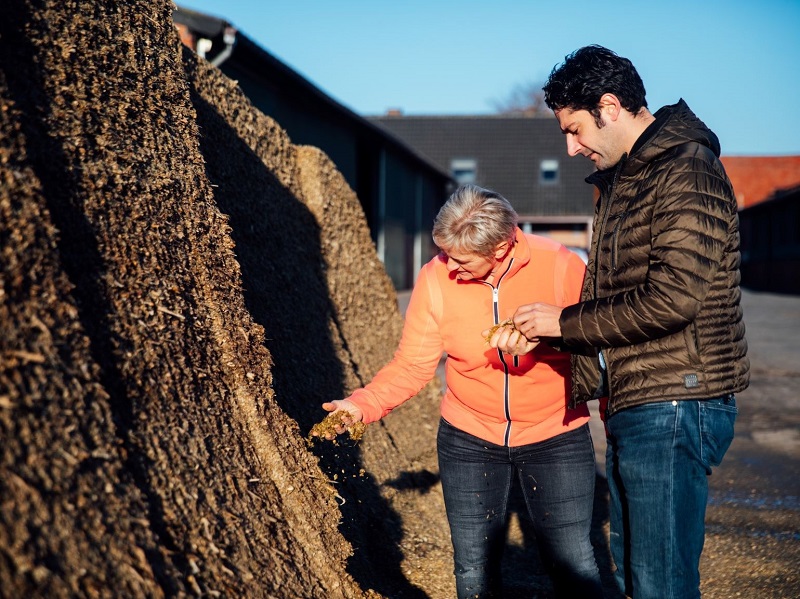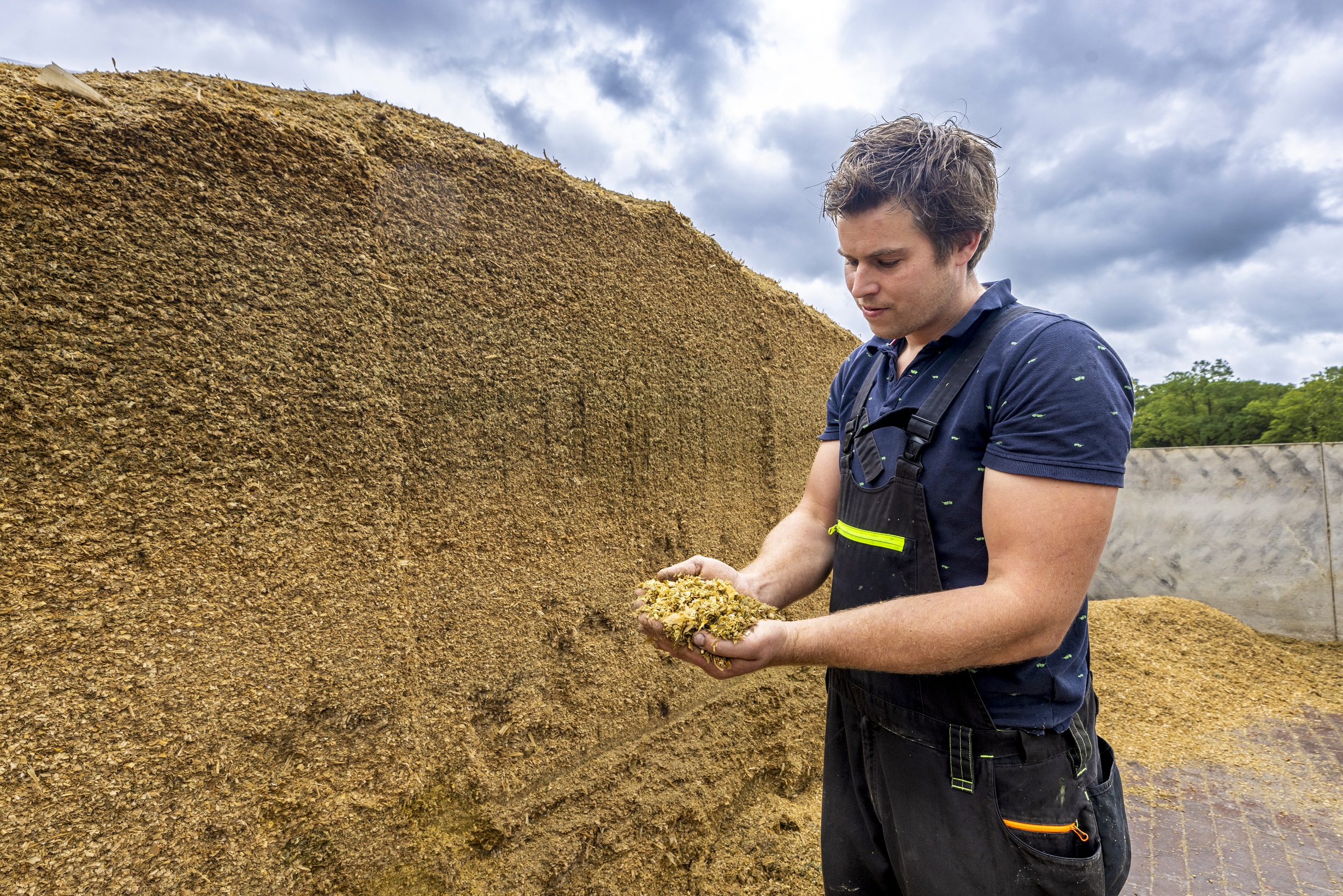This year's cut corn harvest is (almost) finished again. Partly due to the drought in recent years, there is (unfortunately) the need on many farms to feed this corn immediately after harvest.
However, the experiences with this are usually less good. How good or bad depends, of course, on the previous ration. But what is the reason why initially it usually doesn't go well with the fresh corn, but only after several months?
Sometimes reference is made to the sugars in fresh corn being released too quickly and in excess, but this is rarely a problem. Because the sugars are largely locked up in the cells, they must first be broken down in the rumen before the sugars are released. With very short chopping and tiring of the corn, this situation may well occur more quickly.
Ensiling corn
A greater cause of not running of fresh corn can be explained by the absence of preservation. During preservation (ensiling), sugars and easily degradable starch are converted into acids (by the bacteria present in the silage). As a result, the pH of the silage drops from 7 at ensiling to about 4 (depending on the DS content of the silage). In addition to creating a higher storability, other things happen in silages:
- Starch resistance decreases
- A higher digestibility of cell walls occurs (NDF)
The following is an explanation of these 2 points.
Starch resistance
The starch in silage corn is all small grains, packed together in the complete corn kernel. The property of these grains is that they have a very hard structure. This means that they break down very difficult in the rumen. As a result, the nutrients in the corn kernel will be released very slowly for the rumen bacteria. Much of the starch is not released until the gut level, this is the so-called resistant starch. In fresh soiled corn, this resistant starch is over 30-35% of the total starch present.
During the ensiling process, acids slowly begin to act on the starch grains and, as a result, the resistance will decrease, making the starch easier to break down in the rumen and thus serve as a nutrient for rumen flora. This process has had its greatest effect after about 3 months of ensiling, but continues beyond that. After about 6 months, the resistance has decreased to 20-22%. Virtually all silages then reach the same level.
High-producing cows can utilize resistant starch very well, but an excess does not make sense. In addition, the rumen must first work fully before the intestines are switched on. After all, a cow remains a ruminant.
The excess of resistant starch, along with the slowness, difficulty in fermenting the "regular" starch, has a great effect on the digestion and fermentation pattern in the cow's rumen and intestines. Therefore, the result is a more solid manure with a lot of grain residue (unused feed value) which puts pressure on milk production.
Starting with the holidays (Christmas/New Year), we see a change, and feeding with corn started to "run"again.
Pre-digestion of cell walls (NDF).
Corn is very energy-rich in terms of starch, but the cell walls and cell content also have a definite impact on the whole. The main key figure in this is the NDF digestibility.
The NDF is the summation of all fiber rich material. The digestibility of this can be examined. In good pre-dry silages, it is above 70%. If the digestibility is below 70%, the silage is actually unsuitable for dairy cows. With silage corn, this digestibility is at a significantly lower level, roughly between 45 and 55%.
Fortunately, the digestibility of corn can be increased. This is because the process of ensiling also affects the cell walls. If a silage sits longer in an acidic environment, the cell walls also gradually become easier to digest/ferment for the cow/pens flora. This breakdown effect occurs more rapidly than for starch. For the process of ensiling to have sufficient impact, the corn should be ensiled for at least 6 weeks before feeding.
Impact on management
Reading the above, you may think: this information comes too late, this is mustard after the meal. This is of no use to me now. In that you are right, but....
As a business owner, you need to look ahead and also learn. For example, one possibility is to look ahead now to next year, and distribute the corn available until the end of 2021. This will probably provide a slight shift in the current ration, which of course should be possible with the total stock available. Preparing a balance drawing up of available barn feed will be crucial for this.
An additional condition here is that the corn for the fall of 2021 must also be accessible for feeding at that time. If it is currently 'just' sitting in the trench silo, there will be a time to ensile part of it, and this ensiled maize must be sealed for at least 3 weeks, because otherwise it will very easily invert unwanted heating. In concrete terms, this means that by mid-summer 2021 at the latest, part of the corn must be put into a new silage for feeding in the period between the harvest and the end of the year 2021.
The advantage of this is that it does take away a large chunk in the front of the silage, so that real cold, fresh corn will be fed again. For the even longer term, the search is on for a way to have so much corn storage (and have it in storage), so that preserved corn can be fed at all times.


